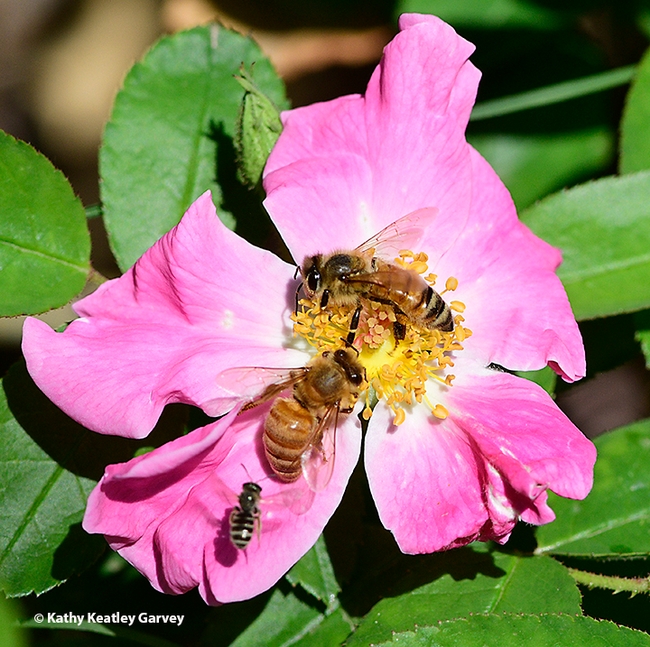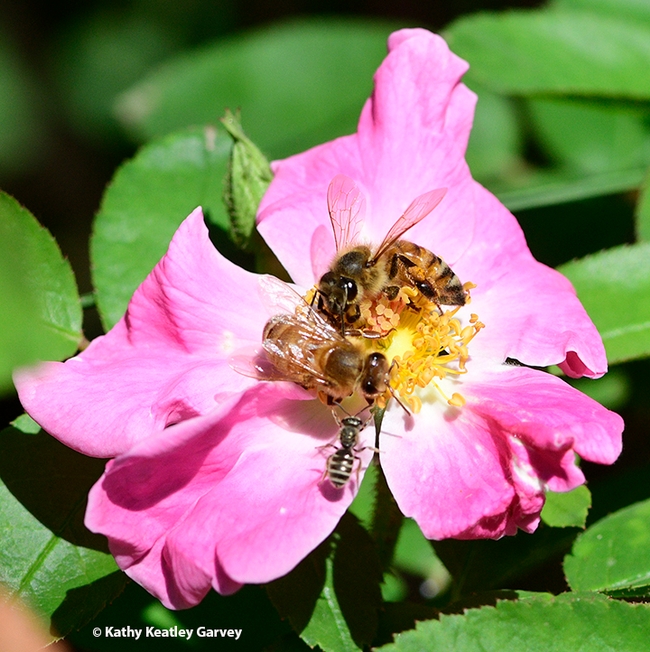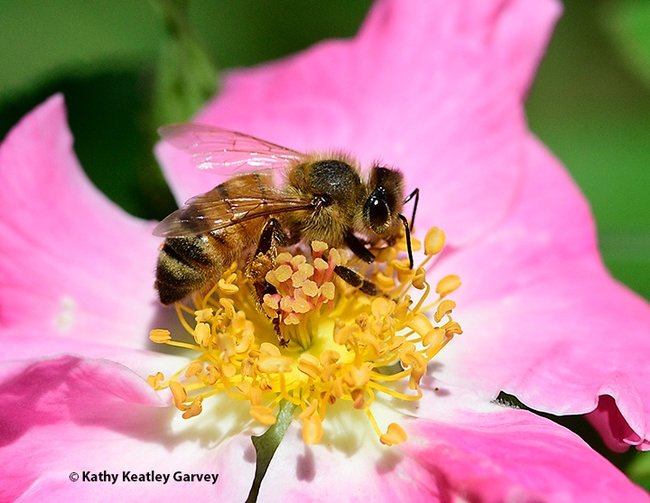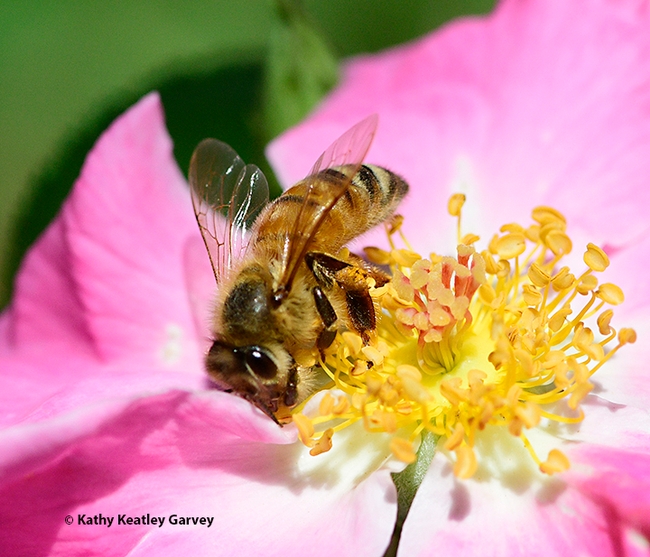Talk about flower power.
When you walk through the UC Davis Bee Haven, a half-acre garden on Bee Biology Road, west of the central campus, you'll see bees and other pollinators foraging on a pink floribunda rose cultivar, “Nearly Wild." It's flamingo pink, quite fragrant and very buzzworthy, providing both pollen and nectar.
This cultivar is aptly named "Nearly Wild." It has five petals, just like wild roses.
The garden, installed in 2009 and a project of the UC Davis Department of Entomology and Nemalogy, is located next to the Harry H. Laidlaw Jr. Honey Bee Research Facility. Director of the haven is apiculturist/researcher Elina Lastro Niño, associate professor of Cooperative Extension, based in the department.
A six-foot long worker bee, the ceramic-mosaic work of Donna Billick of Davis, anchors the garden, as honey bees from the nearby Laidlaw apiary gather nectar and pollen.
But back to the “Nearly Wild” roses.
They remind us so much of the truly wild roses we've seen growing along river banks, roadsides and in fields. Roses (family Rosaceae and genus Rosa) originated some 25 million years ago. Many of today's roses are the result of centuries of breeding.
What's the story behind "Nearly Wild" and what are its characteristics?" The Missouri Botanical Garden website says this is "a floribunda rose ('Dr. W. Van Fleet' x 'Leuchstern') which typically grows 2-3' tall (less frequently to 4') and as wide. It is a dense, shrubby plant which features clusters of mildly fragrant, single, pink roses (to 3" diameter) with center clumps of prominent yellow stamens. Five-petalled flowers are reminiscent of some species roses hence the cultivar name. Flowers bloom continuously from May to frost. Glossy dark green foliage. Introduced by Brownwell in 1941."
The UC Davis Bee Haven is currently being renovated, but you can still visit from dawn to dusk. Admission is free.
Attached Images:

A pink floribunda rose cultivar, "Nearly Wild," draws honey bees and native bees in the UC Davis Bee Haven. (Photo by Kathy Keatley Garvey)

A native bee seeks to join two honey bees in gathering nectar and pollen from a floribunda rose cultivar, "Nearly Wild," in the UC Davis Bee Haven. (Photo by Kathy Keatley Garvey)

Side view of a honey bee foraging on a "Nearly Wild" rose cultivar in the UC Davis Bee Haven. (Photo by Kathy Keatley Garvey)

A honey bee foraging on "Nearly Wild" looks at the photographer. (Photo by Kathy Keatley Garvey)